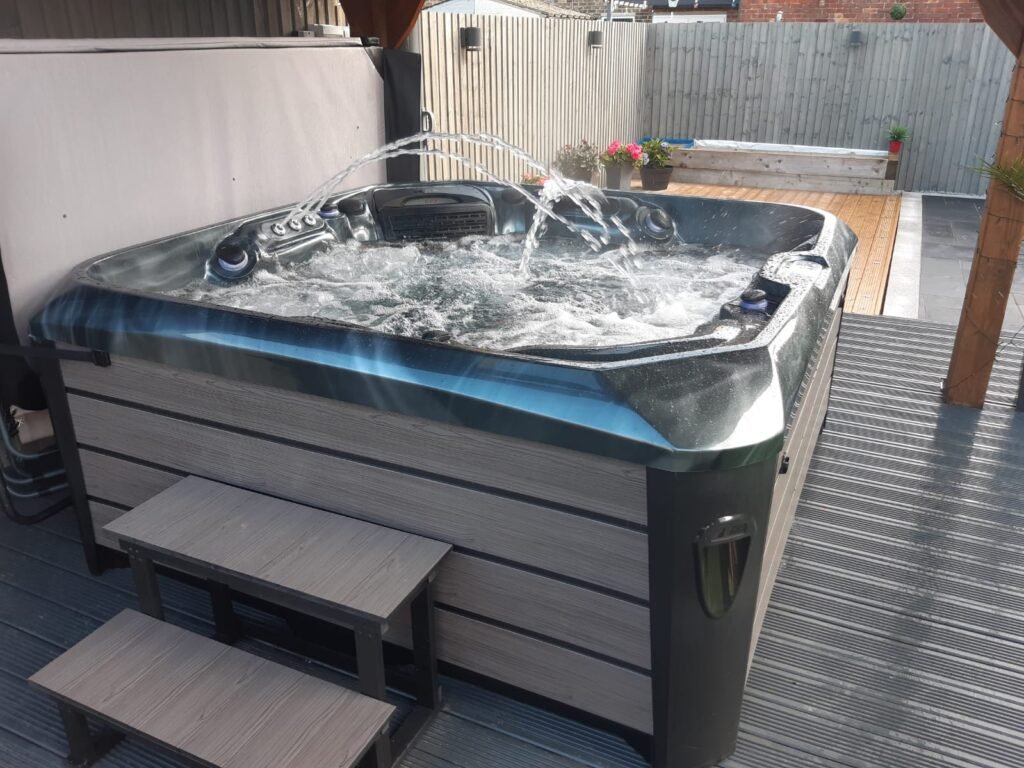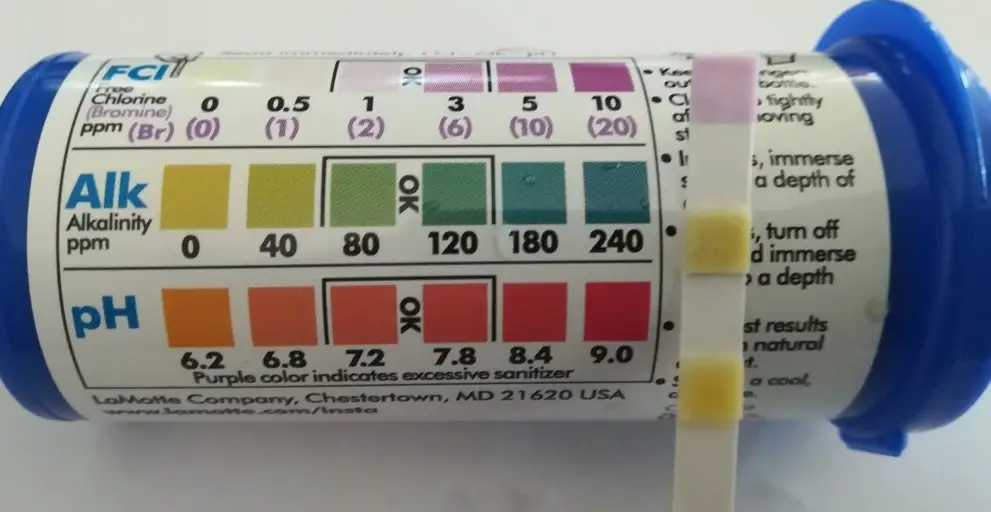Introduction
A hot tub is a haven of relaxation and rejuvenation, providing an escape from the stresses of daily life. However, maintaining optimal water quality is crucial to ensure a safe and enjoyable hot tub experience. Two critical parameters that significantly impact water quality are pH and alkalinity. While high pH can lead to cloudy water, scale buildup, and inefficient sanitizer performance, low alkalinity can cause corrosion of metal components and rapid pH fluctuations.

Understanding the Causes of pH Imbalance
pH, or potential of hydrogen, measures the acidity or alkalinity of a solution. The ideal pH range in hot tubs is between 7.2 and 7.8, indicating a slightly alkaline environment. Several factors can contribute to high pH levels in hot tubs:
- Overuse of pH Increasers: Excessive use of pH increasers, which are chemicals used to raise pH levels, can push pH beyond the recommended range.
- Chlorine or Bromine Breakdown: As chlorine or bromine, the primary sanitizers in hot tubs, break down, they release alkaline byproducts, contributing to an increase in pH.
- Hard Water: Hard water, characterized by high mineral content, naturally has higher pH and alkalinity levels.
- Bathing Products: Residual chemicals from bathing products, such as soaps and lotions, can also affect pH levels.
On the other hand, low alkalinity levels can stem from several causes:
- Insufficient pH Decreasers: Inadequate use of pH decreasers, used to lower pH levels, can allow pH to rise, leading to decreased alkalinity.
- Excessive pH Increasers: Overuse of pH increasers can temporarily raise pH, followed by a rapid drop in alkalinity.
- Calcium Hardness Increasers: Certain chemicals used in hot tub maintenance, such as calcium hardness increasers, can temporarily lower alkalinity.
- Acidic Water Source: If your water source has a naturally low pH, it may contribute to low alkalinity in your hot tub.
Step-by-Step Guide to Addressing High pH and Low Alkalinity
To effectively address high pH and low alkalinity in your hot tub, follow these steps:
1. Regular Testing: Establish a regular testing routine to monitor your hot tub’s water quality. Use test strips or a liquid test kit to check pH and alkalinity levels at least weekly or more frequently if the tub is heavily used.
2. pH Reduction: If pH is high, gradually lower it using a pH decreaser. Avoid making significant adjustments all at once, as this can lead to overshooting the desired pH level and creating further imbalances. Make minor adjustments, retest frequently, and aim to bring pH within the ideal range of 7.2 to 7.8.
3. Alkalinity Adjustment: Address alkalinity once pH is within the desired range. If the alkalinity is low, gradually raise it using an alkalinity increaser. Follow the same approach with pH reduction, making minor adjustments, retesting frequently, and aiming for an alkalinity level between 80 and 120 ppm.
4. Check Aeration: Aeration can cause the pH to go up without affecting alkalinity. Try to reduce the amount of time your pump is running to decrease aeration. Another solution would be to adjust your filter settings to reduce turbulence in the water or purchase a new filter that is designed for less aeration.
5. Patience and Precision: Maintaining proper pH and alkalinity levels is an ongoing process; patience is key. It may take several adjustments and retests to achieve the desired balance. Remember, making small, incremental changes is better than overshooting the target levels.
6. Seeking Professional Assistance: If you encounter persistent pH and alkalinity fluctuations or feel uncomfortable handling chemicals yourself, consider consulting a hot tub professional. They can provide expert advice, perform thorough water testing, and recommend appropriate solutions for your hot tub model and water conditions.
Consequences of pH and Alkalinity Imbalances
High pH and low alkalinity can have several detrimental effects on your hot tub:
High pH:
- Skin and Eye Irritation: High pH levels can disrupt the skin’s natural protective barrier, leading to dryness, itching, and redness. It can also cause eye irritation, including burning and redness.
- Foam and Clouding: Excessive foam and cloudy water are common signs of high alkalinity. Foam can accumulate on the water’s surface, while cloudiness indicates the presence of suspended particles.
- Ineffective Sanitization: High pH can hinder the effectiveness of chlorine or bromine, significantly reducing their ability to disinfect the water. This can lead to increased bacterial growth and potential health risks.
- Scale Buildup: High alkalinity can promote scale buildup on hot tub surfaces, including jets, heaters, and filters. This can reduce the efficiency of the hot tub and make it more difficult to clean.
Low Alkalinity:
- Corrosion: Low alkalinity can cause corrosion of metal components, such as pumps, jets, and heaters. This can lead to costly repairs and potential safety hazards.
- Rapid pH Fluctuations: Low alkalinity acts as a buffer, preventing fast changes in pH. When alkalinity is low, pH levels can become unstable and fluctuate significantly.
- Sanitizer Stability: Similar to high pH, low alkalinity can also affect the stability of chlorine or bromine, making it more challenging to maintain consistent sanitizer levels.
Additional Tips for Maintaining Balanced Water
- Use Hot Tub-Specific Chemicals: Avoid household chemicals in your hot tub, as they may contain harmful ingredients that can damage the tub or its components. Always opt for hot tub-specific pH and alkalinity adjusters.
- Follow Manufacturer Instructions: Carefully follow the instructions provided by the manufacturer of your hot tub chemicals to ensure proper use and dosage. Different chemicals may have varying application methods and concentrations.
- Consider Professional Maintenance: Besides regular testing and self-maintenance, consider scheduling periodic cleanings and inspections by a qualified hot tub technician. They can identify and address potential problems before they escalate, ensuring your hot tub remains in optimal condition.
Conclusion
Maintaining proper pH and alkalinity levels is essential for a safe, enjoyable, and long-lasting hot tub experience. By understanding the causes and consequences of these imbalances, following the step-by-step guide, and incorporating additional tips, you can effectively manage your hot tub’s water quality and prevent potential issues. Remember, regular testing, preventive maintenance, and seeking professional assistance when needed are crucial for maximizing the benefits of your hot tub investment and maintaining a healthy, balanced hot tub environment.
A regular testing routine is crucial for maintaining proper pH and alkalinity levels in your hot tub. It is recommended to test your hot tub’s water at least weekly or more frequently if the tub is heavily used. This allows you to identify and address any imbalances promptly, preventing potential problems from developing.
The ideal pH range for a hot tub is between 7.2 and 7.8, indicating a slightly alkaline environment. This range ensures optimal sanitizer effectiveness, skin comfort, and protection against corrosion. The recommended alkalinity range for hot tubs is between 80 and 120 ppm. Alkalinity acts as a buffer, preventing rapid pH fluctuations and maintaining stable sanitizer levels.
If your hot tub experiences persistent pH and alkalinity fluctuations, it’s advisable to consult a hot tub professional. They can perform thorough water testing, identify any underlying issues, and recommend tailored solutions to address the root cause of the imbalances. Their expertise can help you maintain optimal water quality and prevent recurring problems.
Several telltale signs indicate pH and alkalinity imbalances in your hot tub. High pH often manifests as skin and eye irritation, excessive foam and cloudiness, and reduced sanitizer effectiveness. On the other hand, low alkalinity can lead to corrosion of metal components, rapid pH fluctuations, and inconsistent sanitizer levels.
Here are some other equally helpful hot tub guides:
